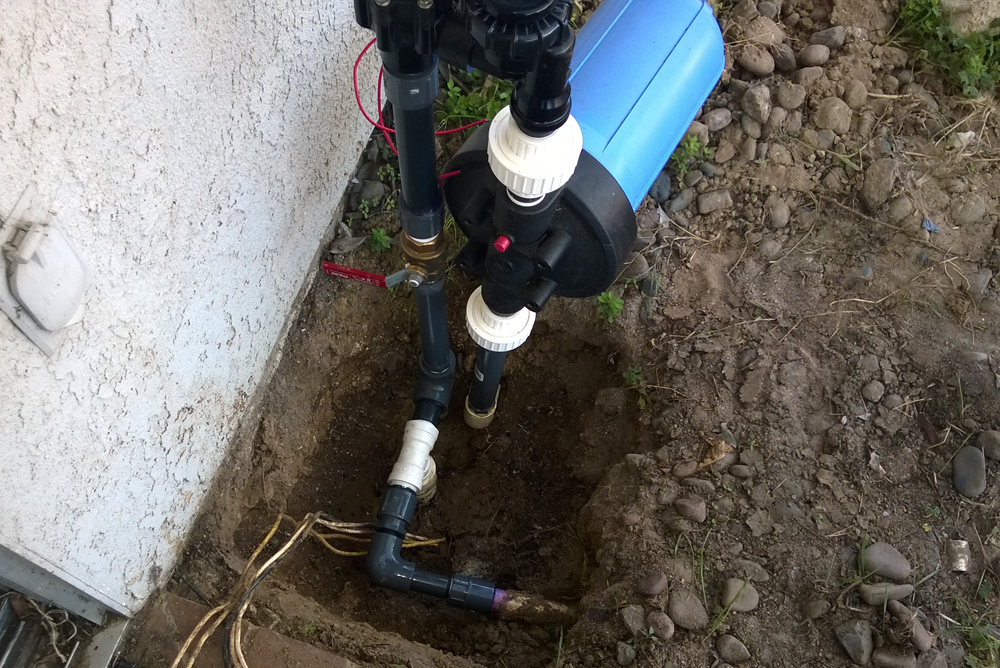While adding a lever shut off valve just before a sprinkler valve on a metal riser, I turned too much, and it broke off the iron nipple going into the PVC T underground. Attached is a picture of the setup, the main thing different is that it was a 1 1/4" T on all sides previously. The nipple to the right broke off. And what I realized after finally taking a sawzall to the old T, was that the nipple was glued into the PVC T. So as hard as I tried, it wasn't coming out.
The pipe coming up from below is 1 1/4", and went down at least 2', maybe more. Not sure if the old T was threaded or slip, but in any case it was also glued with PVC cement.
I was without water until I got this fixed, turn on the main water, and it comes gushing out.
So I fixed it the best I could, with what I know, so that I could take a shower and flush the toilet by Monday before going back in to work.
And I'm here now to try to understand what I should have done better and/or different.
The previous T was 1 1/4" on all three.
Two reducers on the left to drop it down to 3/4" for that line, and one reducer on the right to drop it down to 1".
So I used a 1" T - threaded on all sides, and put a small nipple into the downward opening.
Then used Loctite Marine epoxy to glue that T onto the vertical pipe coming up.
They previously had metal in the same pieces as the picture on the right side, so I did the same. Although I didn't glue that nipple into the T this time.
Is it bad to switch from PVC to metal?
Are there reasons to use the metal for the riser parts - or is that likely just what they used because it's what they had?
Is it common to have that T glued on to that vertical 1 1/4" PVC that goes down at least 2+ feet?
Is what I did acceptable or mickey mouse? I'm guessing the latter, but it got it going.
How would somebody that knows what they're doing do this kind of setup?
Greg

The pipe coming up from below is 1 1/4", and went down at least 2', maybe more. Not sure if the old T was threaded or slip, but in any case it was also glued with PVC cement.
I was without water until I got this fixed, turn on the main water, and it comes gushing out.
So I fixed it the best I could, with what I know, so that I could take a shower and flush the toilet by Monday before going back in to work.
And I'm here now to try to understand what I should have done better and/or different.
The previous T was 1 1/4" on all three.
Two reducers on the left to drop it down to 3/4" for that line, and one reducer on the right to drop it down to 1".
So I used a 1" T - threaded on all sides, and put a small nipple into the downward opening.
Then used Loctite Marine epoxy to glue that T onto the vertical pipe coming up.
They previously had metal in the same pieces as the picture on the right side, so I did the same. Although I didn't glue that nipple into the T this time.
Is it bad to switch from PVC to metal?
Are there reasons to use the metal for the riser parts - or is that likely just what they used because it's what they had?
Is it common to have that T glued on to that vertical 1 1/4" PVC that goes down at least 2+ feet?
Is what I did acceptable or mickey mouse? I'm guessing the latter, but it got it going.
How would somebody that knows what they're doing do this kind of setup?
Greg



























![MEISTERFAKTUR drain snake 2.0 [50 FT] - with drill attachment - Ideal plumbing snake for sink and drain unblocking - Solid drain auger for real DYIs! (50 FT - 1/4 inch)](https://m.media-amazon.com/images/I/41VwmTiOsgL._SL500_.jpg)






























